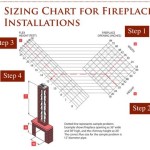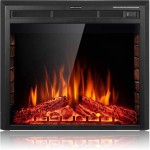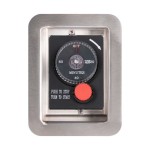Fireplace Hearth Designs: A Comprehensive Guide
The fireplace hearth, the non-combustible area extending from the fireplace opening into the room, serves a crucial role in safety and aesthetics. It protects the surrounding floor from sparks and embers, preventing potential fires. Furthermore, the hearth offers a visual focal point, contributing significantly to the overall design and ambience of the living space. This article explores various fireplace hearth designs, materials, styles, and considerations for integration into different architectural settings.
The primary function of a fireplace hearth is safety. Building codes mandate specific requirements for hearth size and composition, depending on the dimensions of the fireplace opening and whether the fireplace is open or enclosed by glass doors. These regulations are designed to ensure sufficient protection against the spread of fire. Therefore, understanding and adhering to local building codes is paramount when designing or renovating a fireplace hearth.
Beyond its functional purpose, the hearth offers considerable design flexibility. The choice of materials, colors, shapes, and textures can dramatically alter the character of a room, complementing the fireplace itself and the surrounding decor. From rustic stone to sleek modern tile, the possibilities are virtually limitless.
Hearth Materials: Functionality and Aesthetics
The selection of hearth materials is a critical decision, influencing both the longevity and the visual impact of the fireplace. A variety of materials are commonly used, each with its own unique characteristics, advantages, and disadvantages.
Stone: Stone is a popular choice for hearths due to its natural beauty, durability, and heat resistance. Options range from rugged fieldstone to smooth, polished marble. Each type of stone offers a distinct aesthetic, lending itself to different design styles. Fieldstone, with its irregular shapes and earthy tones, is well-suited for rustic or traditional settings. Marble, on the other hand, exudes elegance and sophistication, making it ideal for more formal living rooms. Granite is another durable option, known for its resistance to scratches and stains, while slate provides a more muted, contemporary look. The cost of stone can vary significantly, depending on the type, origin, and complexity of the installation.
Brick: Brick is a classic and versatile material that complements a wide range of architectural styles. It offers excellent heat resistance and durability, making it a practical choice for fireplaces. Brick hearths can be laid in various patterns, such as herringbone, running bond, or basketweave, adding visual interest. The color of the brick can also be customized, from traditional red to more modern shades of gray or off-white. Reclaimed brick is increasingly popular, adding character and a sense of history to the fireplace. Brick is generally a more affordable option than natural stone.
Tile: Tile offers a wide range of design possibilities, with countless colors, patterns, and textures available. Porcelain and ceramic tiles are commonly used for hearths due to their heat resistance and durability. Large-format tiles can create a seamless, contemporary look, while smaller mosaic tiles can add intricate detail. The grout lines between tiles require regular cleaning to prevent staining. The cost of tile can vary widely, depending on the type, size, and design.
Concrete: Concrete is a versatile material that can be molded into various shapes and finishes. Polished concrete hearths offer a sleek, modern aesthetic, while textured concrete can create a more rustic or industrial feel. Concrete can also be stained or colored to match the surrounding decor. It is a durable and heat-resistant material, but it may require sealing to prevent staining. The cost of concrete hearths can vary depending on the complexity of the design and the finish.
Metal: Metal hearths are less common than stone, brick, tile, or concrete, but they can offer a unique and contemporary look. Steel, copper, and brass are all used for hearths. Metal hearths are typically used in modern or industrial settings. They are heat resistant but can be susceptible to scratching or denting. Regular cleaning and maintenance are required to prevent corrosion. The cost of metal hearths can vary depending on the type of metal and the complexity of the design.
Hearth Styles: Adapting to Architectural Designs
The style of the fireplace hearth should complement the overall architectural style of the room. Different styles evoke different moods and aesthetics, and careful consideration should be given to selecting a style that aligns with the homeowner's preferences and the existing decor.
Traditional: Traditional hearth designs often feature natural stone or brick, with classic patterns and details. These hearths tend to be larger in scale, providing a substantial focal point. Common features include raised hearths, decorative moldings, and intricate stone or brickwork. The color palette typically consists of warm, earthy tones, reflecting the natural materials used.
Modern: Modern hearth designs emphasize clean lines, minimalist aesthetics, and the use of contemporary materials such as concrete, glass, and metal. These hearths are often flush with the floor, creating a seamless transition. The color palette is typically neutral, with shades of gray, white, and black dominating. Linear designs and geometric patterns are common.
Rustic: Rustic hearth designs evoke a sense of warmth, comfort, and connection to nature. They often feature natural stone, reclaimed brick, or wood accents. The textures are typically rough and uneven, adding to the rustic charm. Earthy tones and warm colors are prevalent, creating a cozy and inviting atmosphere. The designs may incorporate elements such as exposed beams, rough-hewn stone, and natural wood mantels.
Contemporary: Contemporary hearth designs blend elements of modern and traditional styles, creating a unique and personalized aesthetic. They may feature clean lines and minimalist details, but also incorporate natural materials or unexpected pops of color. The focus is on creating a balanced and harmonious design that reflects the homeowner's individual style. A mix of textures and materials is often used to add visual interest.
Transitional: Transitional hearth designs bridge the gap between traditional and modern styles. They often combine classic elements with contemporary details, creating a timeless and elegant look. The color palette is typically neutral, with subtle accents of color. The focus is on creating a comfortable and sophisticated space that feels both familiar and fresh. Materials such as natural stone, wood, and metal can be combined in unexpected ways.
Key Considerations for Hearth Design and Installation
Beyond aesthetics and materials, several practical considerations are essential when designing and installing a fireplace hearth. These factors impact the safety, functionality, and longevity of the hearth.
Building Codes and Safety Regulations: Adhering to local building codes and safety regulations is paramount. These codes specify minimum hearth dimensions, material requirements, and installation guidelines to ensure the safety of the occupants and prevent fire hazards. Consulting with a qualified building inspector or contractor is crucial to ensure compliance.
Hearth Size and Placement: The size of the hearth should be proportionate to the size of the fireplace opening and the overall dimensions of the room. The hearth should extend far enough to protect the surrounding floor from sparks and embers. The placement of the hearth should also be carefully considered, taking into account traffic patterns and furniture placement.
Professional Installation: Proper installation is crucial to ensure the safety and longevity of the hearth. Working with a qualified contractor who has experience with fireplace hearth installations is highly recommended. A professional can ensure that the hearth is properly constructed, insulated, and vented, and that all building codes are met.
Maintenance and Cleaning: Regular maintenance and cleaning are essential to keep the hearth looking its best and prevent damage. The frequency of cleaning will depend on the type of material used and the frequency of fireplace use. Stone hearths may require sealing to prevent staining. Brick hearths may need to be cleaned with a mild detergent and a soft brush. Tile hearths require regular grout cleaning to prevent discoloration.
Integration with Surrounding Decor: The hearth should be integrated seamlessly with the surrounding decor, creating a cohesive and harmonious design. The color palette, materials, and style of the hearth should complement the fireplace, the walls, the flooring, and the furniture. Consider the overall aesthetic of the room and choose a hearth design that enhances the existing design elements.
By carefully considering these factors, homeowners can create a fireplace hearth that is not only safe and functional but also a beautiful and integral part of their living space. The hearth serves as a focal point, enhancing the ambience and adding value to the home.

Stone Fireplace Ideas Hearth Slab Wrought Iron And Glass Doors Remodel

How To Decorate A Hearth Bhglivebetter Homedecor Homedecorideas Fireplace Decor Home

Mantel Inspiration Home Fireplace Living Room

Cozy Fireplace Remodel Home Brick Makeover

Custom Built Fireplace Ideas For A Living Room Home Makeover Stone Designs

9 Indoor Fireplaces That Will Bring Warmth And Charm To Your Home Swenson Granite 100 Natural Stones

Fireplace Decor Hearth Design Tips

35 Fireplace Mantel Ideas For A Heavenly Hearth Bored Panda

Diy Fireplace Makeover At Home With The Barkers

10 Fireplace Mantel Decorating Ideas Full Service Chimney
Related Posts








